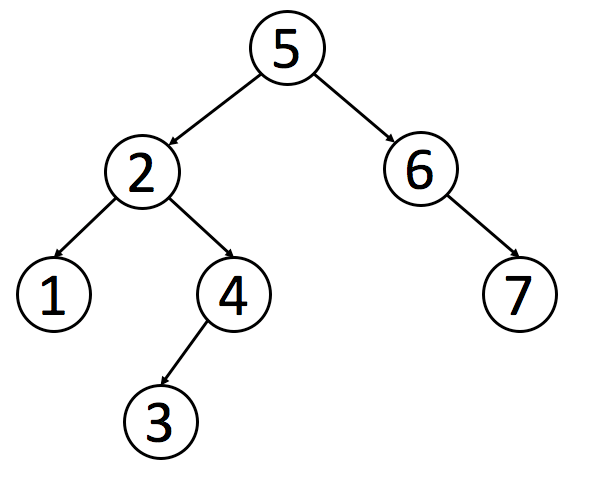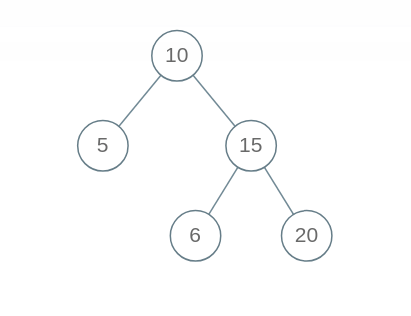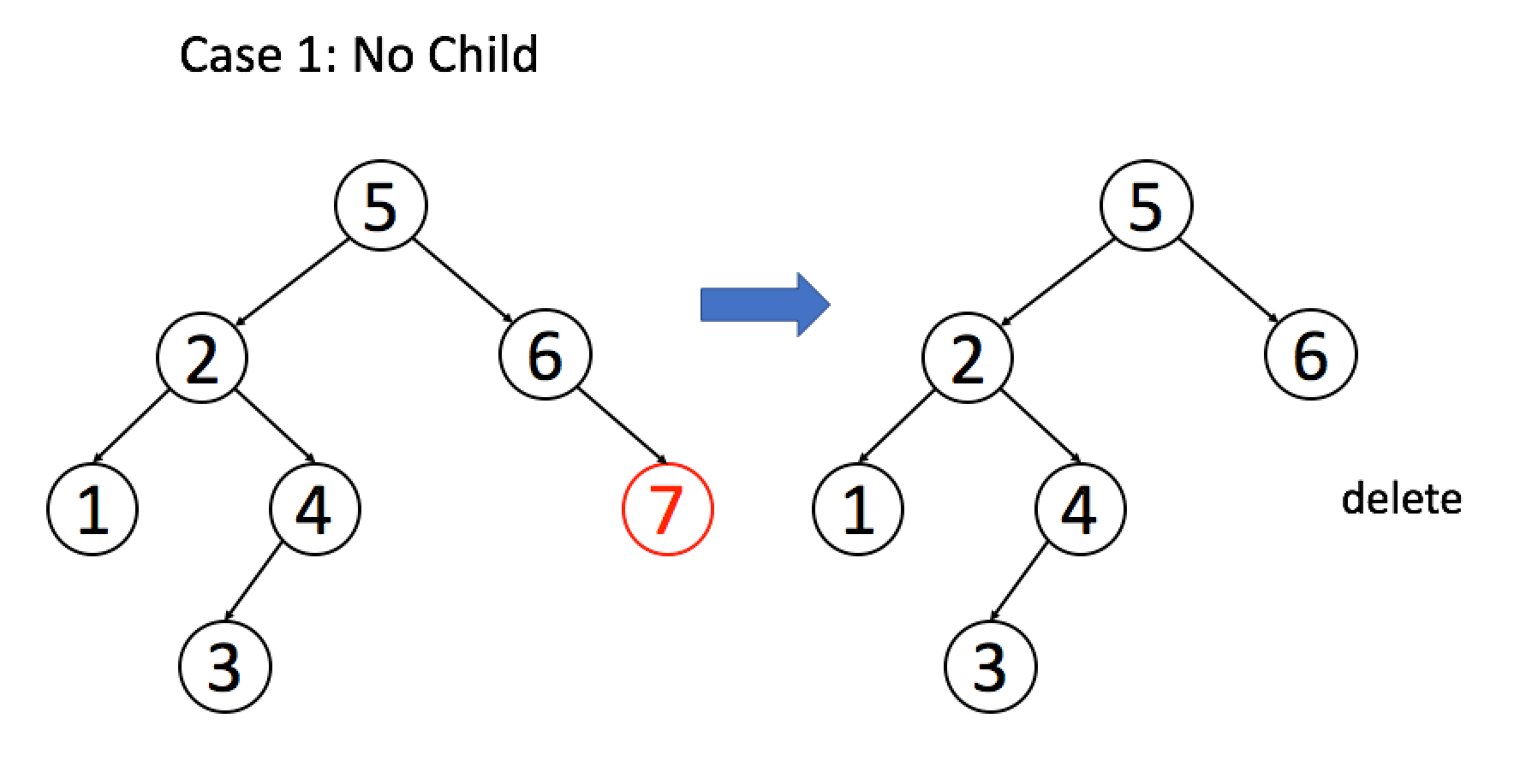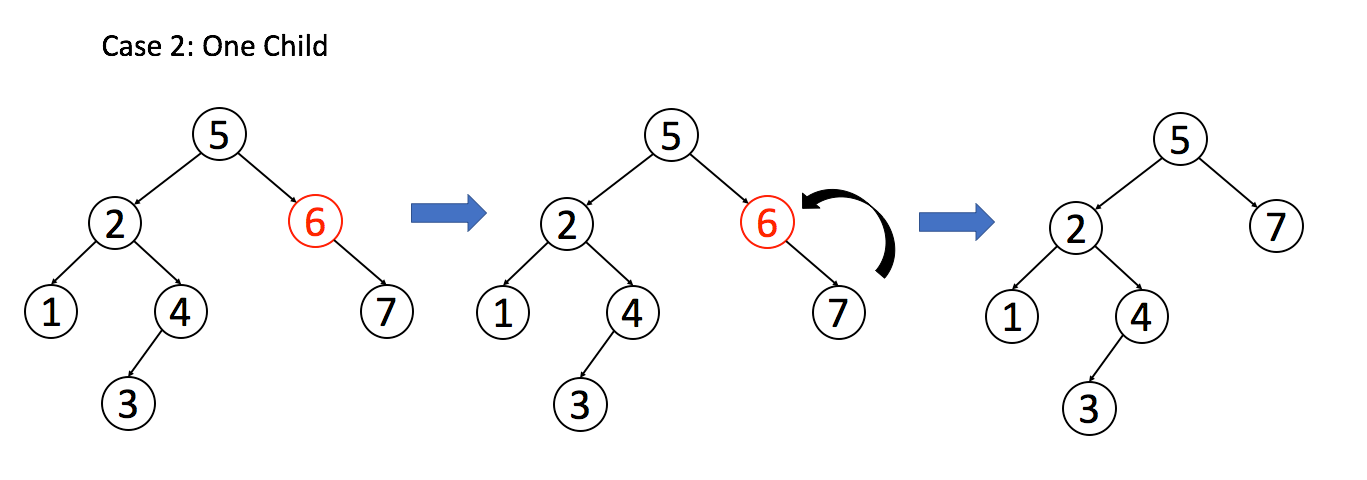《labuladong 的算法秘籍》、《labuladong 的刷题笔记》两本 PDF 和刷题插件 2.0 免费开放下载,详情见 labuladong 的刷题三件套正式发布~
读完本文,你不仅学会了算法套路,还可以顺便去 LeetCode 上拿下如下题目:
-----------
通过之前的文章框架思维,二叉树的遍历框架应该已经印到你的脑子里了,这篇文章就来实操一下,看看框架思维是怎么灵活运用,秒杀一切二叉树问题的。
二叉树算法的设计的总路线:明确一个节点要做的事情,然后剩下的事抛给框架。
void traverse(TreeNode root) {
// root 需要做什么?在这做。
// 其他的不用 root 操心,抛给框架
traverse(root.left);
traverse(root.right);
}举两个简单的例子体会一下这个思路,热热身。
1. 如何把二叉树所有的节点中的值加一?
void plusOne(TreeNode root) {
if (root == null) return;
root.val += 1;
plusOne(root.left);
plusOne(root.right);
}2. 如何判断两棵二叉树是否完全相同?
boolean isSameTree(TreeNode root1, TreeNode root2) {
// 都为空的话,显然相同
if (root1 == null && root2 == null) return true;
// 一个为空,一个非空,显然不同
if (root1 == null || root2 == null) return false;
// 两个都非空,但 val 不一样也不行
if (root1.val != root2.val) return false;
// root1 和 root2 该比的都比完了
return isSameTree(root1.left, root2.left)
&& isSameTree(root1.right, root2.right);
}借助框架,上面这两个例子不难理解吧?如果可以理解,那么所有二叉树算法你都能解决。
二叉搜索树(Binary Search Tree,简称 BST)是一种很常用的的二叉树。它的定义是:一个二叉树中,任意节点的值要大于等于左子树所有节点的值,且要小于等于右边子树的所有节点的值。
如下就是一个符合定义的 BST:
下面实现 BST 的基础操作:判断 BST 的合法性、增、删、查。其中“删”和“判断合法性”略微复杂。
零、判断 BST 的合法性
这里是有坑的哦,我们按照刚才的思路,每个节点自己要做的事不就是比较自己和左右孩子吗?看起来应该这样写代码:
boolean isValidBST(TreeNode root) {
if (root == null) return true;
if (root.left != null && root.val <= root.left.val) return false;
if (root.right != null && root.val >= root.right.val) return false;
return isValidBST(root.left)
&& isValidBST(root.right);
}但是这个算法出现了错误,BST 的每个节点应该要小于右边子树的所有节点,下面这个二叉树显然不是 BST,但是我们的算法会把它判定为 BST。
出现错误,不要慌张,框架没有错,一定是某个细节问题没注意到。我们重新看一下 BST 的定义,root 需要做的不只是和左右子节点比较,而是要整个左子树和右子树所有节点比较。怎么办,鞭长莫及啊!
这种情况,我们可以使用辅助函数,增加函数参数列表,在参数中携带额外信息,请看正确的代码:
boolean isValidBST(TreeNode root) {
return isValidBST(root, null, null);
}
boolean isValidBST(TreeNode root, TreeNode min, TreeNode max) {
if (root == null) return true;
if (min != null && root.val <= min.val) return false;
if (max != null && root.val >= max.val) return false;
return isValidBST(root.left, min, root)
&& isValidBST(root.right, root, max);
}一、在 BST 中查找一个数是否存在
根据我们的指导思想,可以这样写代码:
boolean isInBST(TreeNode root, int target) {
if (root == null) return false;
if (root.val == target) return true;
return isInBST(root.left, target)
|| isInBST(root.right, target);
}这样写完全正确,充分证明了你的框架性思维已经养成。现在你可以考虑一点细节问题了:如何充分利用信息,把 BST 这个“左小右大”的特性用上?
很简单,其实不需要递归地搜索两边,类似二分查找思想,根据 target 和 root.val 的大小比较,就能排除一边。我们把上面的思路稍稍改动:
boolean isInBST(TreeNode root, int target) {
if (root == null) return false;
if (root.val == target)
return true;
if (root.val < target)
return isInBST(root.right, target);
if (root.val > target)
return isInBST(root.left, target);
// root 该做的事做完了,顺带把框架也完成了,妙
}于是,我们对原始框架进行改造,抽象出一套针对 BST 的遍历框架:
void BST(TreeNode root, int target) {
if (root.val == target)
// 找到目标,做点什么
if (root.val < target)
BST(root.right, target);
if (root.val > target)
BST(root.left, target);
}二、在 BST 中插入一个数
对数据结构的操作无非遍历 + 访问,遍历就是“找”,访问就是“改”。具体到这个问题,插入一个数,就是先找到插入位置,然后进行插入操作。
上一个问题,我们总结了 BST 中的遍历框架,就是“找”的问题。直接套框架,加上“改”的操作即可。一旦涉及“改”,函数就要返回 TreeNode 类型,并且对递归调用的返回值进行接收。
TreeNode insertIntoBST(TreeNode root, int val) {
// 找到空位置插入新节点
if (root == null) return new TreeNode(val);
// if (root.val == val)
// BST 中一般不会插入已存在元素
if (root.val < val)
root.right = insertIntoBST(root.right, val);
if (root.val > val)
root.left = insertIntoBST(root.left, val);
return root;
}三、在 BST 中删除一个数
这个问题稍微复杂,不过你有框架指导,难不住你。跟插入操作类似,先“找”再“改”,先把框架写出来再说:
TreeNode deleteNode(TreeNode root, int key) {
if (root.val == key) {
// 找到啦,进行删除
} else if (root.val > key) {
root.left = deleteNode(root.left, key);
} else if (root.val < key) {
root.right = deleteNode(root.right, key);
}
return root;
}找到目标节点了,比方说是节点 A,如何删除这个节点,这是难点。因为删除节点的同时不能破坏 BST 的性质。有三种情况,用图片来说明。
情况 1:A 恰好是末端节点,两个子节点都为空,那么它可以当场去世了。
if (root.left == null && root.right == null)
return null;情况 2:A 只有一个非空子节点,那么它要让这个孩子接替自己的位置。
// 排除了情况 1 之后
if (root.left == null) return root.right;
if (root.right == null) return root.left;情况 3:A 有两个子节点,麻烦了,为了不破坏 BST 的性质,A 必须找到左子树中最大的那个节点,或者右子树中最小的那个节点来接替自己。我们以第二种方式讲解。
if (root.left != null && root.right != null) {
// 找到右子树的最小节点
TreeNode minNode = getMin(root.right);
// 把 root 改成 minNode
root.val = minNode.val;
// 转而去删除 minNode
root.right = deleteNode(root.right, minNode.val);
}三种情况分析完毕,填入框架,简化一下代码:
TreeNode deleteNode(TreeNode root, int key) {
if (root == null) return null;
if (root.val == key) {
// 这两个 if 把情况 1 和 2 都正确处理了
if (root.left == null) return root.right;
if (root.right == null) return root.left;
// 处理情况 3
TreeNode minNode = getMin(root.right);
root.val = minNode.val;
root.right = deleteNode(root.right, minNode.val);
} else if (root.val > key) {
root.left = deleteNode(root.left, key);
} else if (root.val < key) {
root.right = deleteNode(root.right, key);
}
return root;
}
TreeNode getMin(TreeNode node) {
// BST 最左边的就是最小的
while (node.left != null) node = node.left;
return node;
} 删除操作就完成了。注意一下,这个删除操作并不完美,因为我们一般不会通过 root.val = minNode.val 修改节点内部的值来交换节点,而是通过一系列略微复杂的链表操作交换 root 和 minNode 两个节点。因为具体应用中,val 域可能会很大,修改起来很耗时,而链表操作无非改一改指针,而不会去碰内部数据。
但这里忽略这个细节,旨在突出 BST 基本操作的共性,以及借助框架逐层细化问题的思维方式。
四、最后总结
通过这篇文章,你学会了如下几个技巧:
-
二叉树算法设计的总路线:把当前节点要做的事做好,其他的交给递归框架,不用当前节点操心。
-
如果当前节点会对下面的子节点有整体影响,可以通过辅助函数增长参数列表,借助参数传递信息。
-
在二叉树框架之上,扩展出一套 BST 遍历框架:
void BST(TreeNode root, int target) {
if (root.val == target)
// 找到目标,做点什么
if (root.val < target)
BST(root.right, target);
if (root.val > target)
BST(root.left, target);
}- 掌握了 BST 的基本操作。
_____________
刷算法,学套路,认准 labuladong,公众号和 在线电子书 持续更新最新文章。
本小抄即将出版,微信扫码关注公众号,后台回复「小抄」限时免费获取,回复「进群」可进刷题群一起刷题,带你搞定 LeetCode。
======其他语言代码======
dekunma提供第98题C++代码:
/**
* Definition for a binary tree node.
* struct TreeNode {
* int val;
* TreeNode *left;
* TreeNode *right;
* TreeNode(int x) : val(x), left(NULL), right(NULL) {}
* };
*/
class Solution {
public:
bool isValidBST(TreeNode* root) {
// 用helper method求解
return isValidBST(root, nullptr, nullptr);
}
bool isValidBST(TreeNode* root, TreeNode* min, TreeNode* max) {
// base case, root为nullptr
if (!root) return true;
// 不符合BST的条件
if (min && root->val <= min->val) return false;
if (max && root->val >= max->val) return false;
// 向左右子树分别递归求解
return isValidBST(root->left, min, root)
&& isValidBST(root->right, root, max);
}
};yanggg1997提供第100题C++代码:
/**
* Definition for a binary tree node.
* struct TreeNode {
* int val;
* TreeNode *left;
* TreeNode *right;
* TreeNode() : val(0), left(nullptr), right(nullptr) {}
* TreeNode(int x) : val(x), left(nullptr), right(nullptr) {}
* TreeNode(int x, TreeNode *left, TreeNode *right) : val(x), left(left), right(right) {}
* };
*/
class Solution {
public:
bool isSameTree(TreeNode* p, TreeNode* q) {
// 若当前节点均为空,则此处相同
if(!p && !q) return true;
// 若当前节点在一棵树上有而另一棵树上为空,则两棵树不同
if(!p && q) return false;
if(p && !q) return false;
// 若当前节点在两棵树上均存在。
if(p->val != q->val)
{
return false;
}
else
{
// 向左右子树分别递归判断
return isSameTree(p->left, q->left) && isSameTree(p->right, q->right);
}
}
};ChenjieXu提供第98题Python3代码:
def isValidBST(self, root):
# 递归函数
def helper(node, lower = float('-inf'), upper = float('inf')):
if not node:
return True
val = node.val
if val <= lower or val >= upper:
return False
# 右节点
if not helper(node.right, val, upper):
return False
# 左节点
if not helper(node.left, lower, val):
return False
return True
return helper(root)
lixiandea提供第100题Python3代码:
# Definition for a binary tree node.
# class TreeNode:
# def __init__(self, val=0, left=None, right=None):
# self.val = val
# self.left = left
# self.right = right
class Solution:
def isSameTree(self, p: TreeNode, q: TreeNode) -> bool:
'''
当前节点值相等且树的子树相等,则树相等。
递归退出条件:两个节点存在一个节点为空
'''
if p == None:
if q == None:
return True
else:
return False
if q == None:
return False
# 当前节点相同且左子树和右子树分别相同
return p.val==q.val and self.isSameTree(p.left, q.left) and self.isSameTree(p.right, q.right)Edwenc 提供 leetcode第450题的python3 代码:
# Definition for a binary tree node.
# class TreeNode:
# def __init__(self, val=0, left=None, right=None):
# self.val = val
# self.left = left
# self.right = right
class Solution:
def deleteNode(self, root: TreeNode, key: int) -> TreeNode:
# 如果没有树 直接返回None
if root == None:
return None
# 如果要删除的结点 就是当前结点
if root.val == key:
# 左子树为空 只有右子树需要被更新 直接返回
if root.left == None:
return root.right
# 右子树为空 只有左子树需要被更新 直接返回
if root.right== None:
return root.left
# 找出此结点左子树的最大值
# 用这个最大值 来代替当前结点
# 再在左子树中递归地删除这个最大值结点
big = self.getMax( root.left )
root.val = big.val
root.left = self.deleteNode( root.left , big.val )
# 当前结点较大 它的左子树中需要删除节点 递归到左子树
elif root.val > key:
root.left = self.deleteNode( root.left , key)
# 当前结点较小 它的右子树中需要删除节点 递归到右子树
else:
root.right= self.deleteNode( root.right, key)
return root
# 辅助函数
# 功能是找出此二叉搜索树中最大元素的结点 并返回此结点
def getMax( self , node ):
# 一直找它的右子树 直到为空
while node.right:
node = node.right
return node/**
* 第【98】题的扩展解法:
* 对于BST,有一个重要的性质,即“BST的中序遍历是单调递增的”。抓住这个性质,我们可以通过中序遍历来判断该二叉树是不是BST。
* 我们定义preNode节点表示上一个遍历的节点,在中序遍历的时候,比较当前节点和preNode节点的大小,一旦有节点小于或等于前一个节点,则不满足BST的规则,直接返回false,否则遍历结束,返回true。
*/
TreeNode preNode = null;
public boolean isValidBST(TreeNode root) {
if (root == null) return true;
boolean leftRes = isValidBST(root.left);
if (preNode != null && root.val <= preNode.val) {
return false;
}
preNode = root;
boolean rightRes = isValidBST(root.right);
return leftRes && rightRes;
}
- 如何把二叉树所有的节点中的值加一?
热热身,体会体会二叉树的递归思想。
let plusOne = function(root) {
if (root == null) return;
root.val += 1;
plusOne(root.left);
plusOne(root.right);
}- 如何判断两棵二叉树是否完全相同?
/**
* Definition for a binary tree node.
* function TreeNode(val) {
* this.val = val;
* this.left = this.right = null;
* }
*/
/**
* @param {TreeNode} p
* @param {TreeNode} q
* @return {boolean}
*/
var isSameTree = function(p, q) {
if(p == null && q == null)
return true;
if(p == null || q == null)
return false;
if(p.val != q.val)
return false;
return isSameTree(p.left, q.left) && isSameTree(p.right, q.right);
};零、判断 BST 的合法性
/**
* Definition for a binary tree node.
* function TreeNode(val, left, right) {
* this.val = (val===undefined ? 0 : val)
* this.left = (left===undefined ? null : left)
* this.right = (right===undefined ? null : right)
* }
*/
/**
* @param {TreeNode} root
* @return {boolean}
*/
var isValidBST = function (root) {
return helper(root, null, null);
};
var helper = function (root, min, max) {
if (root == null) return true;
if (min != null && root.val <= min.val) return false;
if (max != null && root.val >= max.val) return false;
return helper(root.left, min, root)
&& helper(root.right, root, max);
}一、在BST 中查找一个数是否存在
/**
* Definition for a binary tree node.
* function TreeNode(val, left, right) {
* this.val = (val===undefined ? 0 : val)
* this.left = (left===undefined ? null : left)
* this.right = (right===undefined ? null : right)
* }
*/
/**
* @param {TreeNode} root
* @param {number} val
* @return {TreeNode}
*/
var searchBST = function(root, target) {
if (root == null) return null;
if (root.val === target)
return root;
if (root.val < target)
return searchBST(root.right, target);
if (root.val > target)
return searchBST(root.left, target);
// root 该做的事做完了,顺带把框架也完成了,妙
};二、在 BST 中插入一个数
/**
* Definition for a binary tree node.
* function TreeNode(val, left, right) {
* this.val = (val===undefined ? 0 : val)
* this.left = (left===undefined ? null : left)
* this.right = (right===undefined ? null : right)
* }
*/
/**
* @param {TreeNode} root
* @param {number} val
* @return {TreeNode}
*/
var insertIntoBST = function(root, val) {
// 找到空位置插入新节点
if (root == null) return new TreeNode(val);
// if (root.val == val)
// BST 中一般不会插入已存在元素
if (root.val < val)
root.right = insertIntoBST(root.right, val);
if (root.val > val)
root.left = insertIntoBST(root.left, val);
return root;
};三、在 BST 中删除一个数
/**
* Definition for a binary tree node.
* function TreeNode(val, left, right) {
* this.val = (val===undefined ? 0 : val)
* this.left = (left===undefined ? null : left)
* this.right = (right===undefined ? null : right)
* }
*/
/**
* @param {TreeNode} root
* @param {number} key
* @return {TreeNode}
*/
var deleteNode = function(root, key) {
if (!root) return null
// if key > root.val, delete node in root.right. Otherwise delete node in root.left.
if (key > root.val) {
const rightNode = deleteNode(root.right, key)
root.right = rightNode
return root
} else if (key < root.val) {
const leftNode = deleteNode(root.left, key)
root.left = leftNode
return root
} else {
// now root.val === key
if (!root.left) {
return root.right
}
if (!root.right) {
return root.left
}
// 将删除元素的左下方元素替代删除元素;
// 将左下方元素的右侧最下方子元素衔接删除元素的右下方子元素;
const rightChild = root.right
let newRightChild = root.left
while (newRightChild.right) {
newRightChild = newRightChild.right
}
newRightChild.right = rightChild
return root.left
}
};









